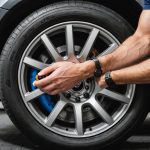Driving in heavy rain poses unique challenges that all motorists should be aware of. Wet conditions can severely impact road traction, visibility, and reaction times, increasing the risk of accidents. Understanding how to navigate these conditions safely is essential for every driver. In this article, we will explore crucial tips and advice to help you maintain safety on the roads when the weather turns stormy.
Understanding the Risks of Driving in Wet Conditions
When we talk about driving in heavy rain, we refer to a scenario where water accumulates on the road surface, creating a slippery and hazardous environment. One of the primary risks associated with this situation is hydroplaning, which occurs when a vehicle’s tires lose contact with the road due to a layer of water between the tire and the surface. This can happen even at moderate speeds and may lead to a complete loss of control of the vehicle. The ability to avoid such situations depends largely on your understanding of your vehicle‘s handling in adverse conditions.
Have you seen this : What are the best practices for safely sharing the road with cyclists?
Another significant risk is reduced visibility. Heavy rain can obscure your view of the road, other vehicles, traffic signals, and road signs. This can make it challenging to judge distances, speeds, and the presence of obstacles. When driving in such conditions, it becomes crucial to ensure that your windshield wipers are functioning correctly and your headlights are switched on to improve visibility.
Furthermore, the condition of your tires plays a vital role in how well your vehicle handles rain. Tires with worn-out tread can significantly increase the likelihood of slipping. It’s important to regularly check your tire tread and replace them if necessary to maintain optimal grip on wet surfaces. By being aware of these risks and taking the necessary precautions, you can greatly enhance your safety when driving in heavy rain.
Topic to read : Essential Safety Features to Look for When Selecting a Vehicle for Senior Drivers
Essential Tips for Driving Safely in Heavy Rain
To drive safely in heavy rain, you must adjust your driving habits. Maintaining a safe distance from the vehicle ahead is paramount. In wet conditions, stopping distances increase significantly, so you should allow for ample space to react to sudden stops or emergencies. A general rule is to double your usual following distance.
Slowing down is another critical tip. When faced with heavy rain, you should reduce your speed to improve control and reaction times. This reduction is not merely about safety; it also helps prevent the tires from losing contact with the road. Remember that speed limits may not always apply in adverse weather. If the conditions worsen, don’t hesitate to decrease your speed further.
Using your headlights properly is another essential aspect of safe driving in the rain. Headlights should be turned on even during daytime rain. This increases your visibility to other drivers and ensures that you can see the road better. Avoid using high beams, as they can cause glare and reflections that may impede your vision.
Moreover, be mindful of puddles and standing water. Driving through these areas can create a risk of hydroplaning or even cause your engine to stall if water enters the air intake. If you encounter large puddles, it’s best to find an alternate route or slow down significantly as you pass through.
Preparing Your Vehicle for Rainy Conditions
Preparation is key when it comes to driving in heavy rain. Before embarking on a journey, it’s essential to ensure that your vehicle is well-maintained and ready to face wet conditions. Start with a thorough inspection of your tires. Check the tread depth and look for signs of wear or damage. If the tread is below the recommended level, consider replacing the tires to improve grip on wet roads.
Next, examine the windshield wipers. Efficient wipers are critical for visibility during rain. If your wipers are streaking or skipping, it might be time for a replacement. Additionally, ensure that your windshield washer fluid is topped up and the system is functioning properly, as this will help keep your view clear of any debris.
Another area to focus on is your brakes. Make sure that they are responsive and in good condition, as wet roads can affect their performance. If you have any concerns about your brakes, take your vehicle to a professional for a thorough check-up.
Additionally, consider equipping your car with safety features such as anti-lock braking systems (ABS) and electronic stability control (ESC). These technologies can enhance your vehicle’s control in adverse conditions and help you maintain traction. Lastly, always have an emergency kit in your car. This kit should include items like a flashlight, first aid supplies, and even a rain poncho, ensuring you’re prepared for any unexpected situations.
Adjusting Your Driving Technique in Heavy Rain
Adjusting your driving technique is essential when navigating heavy rain. First and foremost, remain calm and composed. Stressful conditions can lead to rash decisions, which can increase the likelihood of accidents. Take a deep breath and focus on the road ahead.
As you drive, remember to keep your hands at the 9 o’clock and 3 o’clock positions on the steering wheel. This grip gives you better control over the vehicle, especially if you hit a slick spot. When steering, make smooth and gradual movements to avoid sudden swerves, which can lead to loss of control.
In addition, be cautious of other drivers. Some may not take necessary precautions and might drive recklessly. Watch for vehicles that appear to be hydroplaning or swerving. Maintain a safe distance and be prepared to react if others do not adhere to safe driving practices.
If the rain becomes exceptionally heavy and visibility drops significantly, don’t hesitate to pull over to a safe location and wait for the weather to improve. It is always better to arrive late than to risk an accident. Remember that your safety and the safety of others on the road is the top priority.
What to Do in Case of an Emergency during Heavy Rain
Even with all precautions, emergencies can still occur while driving in heavy rain. If you find yourself in a situation where your vehicle has skidded or lost control, it is crucial to remain calm. Avoid slamming on the brakes, which can worsen the skid. Instead, gently steer in the direction you want to go, allowing the tires to regain traction.
If your vehicle stalls in heavy rain or water begins to rise around you, remain inside your car if it is safe to do so. Exiting can expose you to potential hazards such as being swept away by floodwaters or being hit by another vehicle. Turn on your hazard lights to alert other drivers of your predicament.
In case of a breakdown, it is advisable to call for roadside assistance. Always keep a charged mobile phone with you, and consider having a power bank handy. If you must exit the vehicle, do so cautiously and only if the situation is dire. Make sure to avoid any downed power lines or flooded areas as you seek help.
Finally, after any incident, take time to assess your situation and that of your passengers. Ensure everyone is safe and unharmed before addressing the vehicle’s condition. Keep emergency contact numbers accessible, and always inform someone of your whereabouts, especially when driving in adverse weather conditions.
Driving in heavy rain requires a heightened level of awareness and adaptability. By understanding the risks, preparing your vehicle, and adjusting your driving techniques, you can significantly enhance your safety on the road. Remember to always prioritize caution, maintain a safe distance, and be ready to react to changing conditions. With these tips, you will be better equipped to handle the challenges that come with driving in wet conditions, ensuring a safer journey for you and your passengers.











